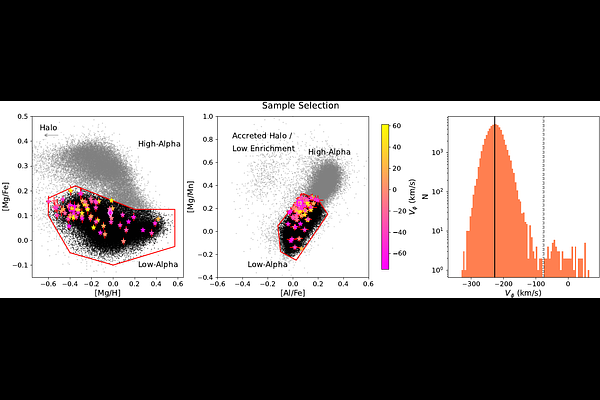Counterculture Stars: Slow and Retrograde Stars with Low-Alpha Disk Abundances

Counterculture Stars: Slow and Retrograde Stars with Low-Alpha Disk Abundances
Carrie Filion, Michael S. Petersen, Danny Horta, Kathryne J. Daniel, Madeline Lucey, Adrian M. Price-Whelan
AbstractThe Milky Way is home to a thin disk that can be defined via kinematics and/or elemental abundances. The elemental abundance-defined thin disk, also called the low-alpha disk, is generally thought to be comprised of stars on planar, circular orbits that approximate the circular velocity curve. While this is an apt description for the majority of stars with thin-disk-like abundances, there are a number of interesting exceptions. In this analysis, we identify and investigate $\sim 70$ stars with thin-disk-like abundances and very slow or retrograde Galactocentric azimuthal velocities. These stars could be kinematical outliers of the thin disk or elemental abundance outliers of the halo. Focusing first on the former, we introduce a number of mechanisms that could alter a thin disk orbit and cause the azimuthal velocity to become slow or retrograde. We then determine signatures for each mechanism and assess whether that mechanism is unlikely, plausible, or consistent given each star's reported properties. We find that at least one mechanism is plausible for each star, and the mechanism with the highest number of consistent candidate stars is dynamical ejection from stellar clusters. We next discuss scenarios that could produce halo stars with thin disk abundances, and again identify stars that could be connected to these mechanisms. With this sample we investigate rare processes, such as binary disruption by the central supermassive black hole, while also providing a unique perspective into the chemo-dynamics and structural components of the Milky Way.